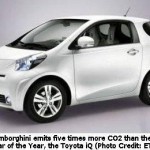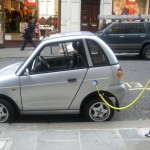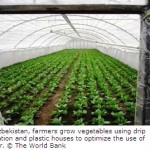
Brussels – CDM Watch and International Rivers call on the CDM Executive Board to reject the mega Rampur Hydroelectric Project in India from receiving CDM carbon credits because it does not comply with essential CDM requirements. They also call on the Swedish Energy Agency, as a party involved in the project, to prove compliance with World Commission of Dams (WCD) criteria. A cable released by WikiLeaks earlier this month states that Indian projects under the CDM, the UN’s carbon offsetting scheme, do not depend on CDM funding.
The 412 MW Rampur Hydroelectric Project located near Rampur in Himachal Pradesh, India, is currently pending approval under the Clean Development Mechanism (CDM). If approved, the project could get 15 million carbon credits from 2012 to 2022. At a market price of € 8 per credit, this would amount to € 120 million profit for the project developer Satluj Jal Vidyut Nigam Limited (SJVNL).
Additionality Barriers “Cleared”
However, civil society groups have opposed the project for being blatantly non-additional because it would have been built anyway and, therefore, does not lead to real emission reduction.
“The construction of the project is almost completed. The decision to finance the project had been taken long before the CDM was created,”” said Himanshu Thakkar, Director of the South Asia Network on Dams, Rivers and People (SANDRP), who has been following the construction of the project over the past years. He added, “”The letter of intent with the World Bank was signed three years after the implementation agreement with the Himachal Pradesh Government in 2004.”
WikiLeaks recently released a cable sent by the US Consulate in Mumbai, India that candidly states that Indian CDM projects do not depend on CDM funding and are, therefore, not additional. The cable summarized a meeting that the Consulate’s Office and the US Governmental Accountability Office (GAO) had with Indian industrialists regarding their views on and experience with the CDM.
R. K. Sethi, Member Secretary of the Indian National CDM Authority and former Chairman of the CDM Executive Board, admitted that the National CDM Authority takes the “”project developer at his word”” for clearing the “”additionality”” barriers.
“This statement by the former chairman raises serious questions about the integrity of decisions by the CDM Executive Board. The current Board members must take additionality seriously and reject non-additional projects,” said Eva Filzmoser, Director of CDM Watch.
World Commission of Dams Criteria Ignored
The Linking Directive requires EU Member States to ensure that the World Commission on Dams (WCD) criteria be respected when approving hydro projects exceeding 20 MW to avoid undue social and environmental harm. Yet, the Swedish Energy Agency has issued a letter of approval for the 420 MW Rampur project and ensured the participation of the World Bank in the project without applying the WCD criteria.
“The Swedish government has an obligation to ensure compliance with WCD criteria. As a responsible party involved, it must put the registration request on hold until a thorough compliance report is available for public review,” said Katy Yan from International Rivers. [NOTE: The Swedish Energy Agency has since made available the WCD Compliance Report to CDM Watch and International Rivers.]
Local communities have expressed environmental and social concerns about the project for years and have reported increased dust problems, higher prevalence of asthma, lower harvests and weakened farm animals.
“The tunnel which SJVN is building diverts underground water away from village sources,”” said a villager from Sarpata village at the vicinities of the project activity; “there is no Catchment Area Treatment Plan. SJVN only recently paid one fourth of the money needed to construct the promised Drinking Water Scheme to restore the damage after four years of inaction,”” he added.
Source: International Rivers and CDM Watch.
[Photo: The 412 MW Rampur Hydroelectric Project under construction near Rampur in Himachal Pradesh, India. (Photo Credit: The World Bank)]











